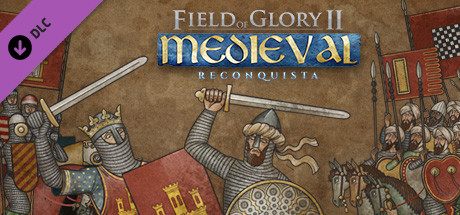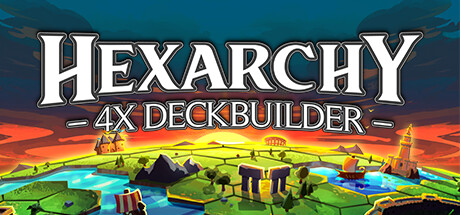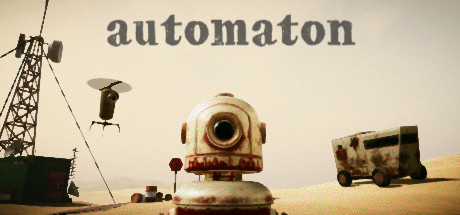
About this content.
Feudalism did not have as dominant an impact in Spain and Italy as it did in northwestern Europe. Both lands had unique factors that affected the conduct of war. By 1050, more than half of the Iberian peninsula was under the rule of Islamic states, an area known as Andalusia. After the demise of the Omayad Caliphate in 1031, Andalusia was divided into several small Muslim states, known as the Taifa Emirates. The taifas often fought among themselves, leaving them unable to combine with the larger Christian kingdom of Castile that was created in 1037 with the absorption of the kingdom of Leon. This was the true beginning of the Christian Reconquista which would not be completed until 1492. To help contain the Christian onslaught, in 1086 Emir Taifa of Seville invited the Murabit Berbers of North Africa into Spain. This did not work out as planned for the Taifas, as after defeating the Castilians at the Battle of Sagrajas, the Murabits quickly incorporated most of the Taifa emirates into their empire. The Murabit Empire was taken over in 1147 by a rival Berber sect, the Almohads. These events were a severe setback for the Spanish Christian kingdoms, but they recovered to win a great victory over the Almohads at Las Navas de Tolosa in 1212, which broke the power of the Muslims in Spain forever. Soon only the emirate of Granada was left, but as a vassal of Castile. Throughout the period, there were also frequent fights between states of the same religion, and Muslim and Christian warriors often had few questions about serving princes of a different religion. In northern Italy, the large cities always tried to maintain a degree of independence, and often fought vigorously against the attempts of the holy Roman emperor to impose his authority over them. They grew increasingly rich in trade, and by the end of the 11th century, their city militias became the main Italian army, eclipsing the role of the feudal knights. In 1176, the northern Italian cities formed the Lombard league, and won a great victory over Emperor Frederick Barbarossa at the Battle of Legnano. This was a part of the wars of the Guelphs and Ghiabilhas. The papacy and the empire initially fought over who had the right to appoint church officials, this was known as the “investiture controversy”. The comics were those who supported the holy Roman emperor, while the gifts were the party supporting the Pope. Although the investiture controversy was resolved in 1122, the conflict between the papacy and the empire, and the Guelphs and Ghiajaculines, raged for hundreds of years. In southern Italy, the Normans rose from humble mercenaries to conquer all of southern Italy and establish the great kingdom of Sicily, after conquering the island from the Arabs. After the line of Norman kings ended, when William II died without male heirs, the throne passed to the Imperial German Hohenstaufen dynasty. In 1266, the Pope encouraged Charles of Anjou to attack the Hohenstaufens, and after the victory at the Battle of Benevento, he seized the kingdom for himself. Over 20 nations and factions covering Spain, Italy and North Africa from 1040 AD to 1270 AD. These include Andalusians, Almohads, Arabs, Aragonese, Byzantine Catalan of Italy, Castilians/Leonese, Catalans, Granadans, Hafsids, Italian Guelves, Italian Ghia, Italian Norms, Lombards, Marinids, Murabis, the Kingdom of Sicily and Tuaregs. Each of them has its own historically accurate banner. 41 more units, allowing troops from all new factions to be accurately represented. An additional 45 army lists allow for historically realistic armies for each of the above factions and their allies at different dates during the period, and bringing the total number of medieval army lists to 103. Additionally, armies can include contingents from historical allies. That's more than fifty thousand permutations. You'll never run out of new matchups to try. 8 more historical scenarios covering the key commitments of the period on an epic scale. These include Monte Maggiore 1041, Civate 1053, Cabra 1079, Sagrajas 1086, Legnano 1176, Las Navas de Tolosa 1212, Montaperti 1260 and Benevento 1266. A further 33 historical Matchups added to the quick battle mode, increasing the total to 98, playable from both the sides. 4 more historically based campaigns covering major leaders and conflicts of the era: El Cid, Muhammad II of Granada, Normans in the south and Frederick II Hohenstaufen. The Sandbox campaign has expanded to include all new army lists, allowing you to lead any nation (and its historical allies) against any other nation (and its allies) – giving thousands of permutations.
Feudalism did not have as dominant an impact in Spain and Italy as it did in northwestern Europe. Both lands had unique factors that affected the conduct of war. By 1050, more than half of the Iberian peninsula was under the rule of Islamic states, an area known as Andalusia. After the demise of the Omayad Caliphate in 1031, Andalusia was divided into several small Muslim states, known as the Taifa Emirates. The taifas often fought among themselves, leaving them unable to combine with the larger Christian kingdom of Castile that was created in 1037 with the absorption of the kingdom of Leon. This was the true beginning of the Christian Reconquista which would not be completed until 1492. To help contain the Christian onslaught, in 1086 Emir Taifa of Seville invited the Murabit Berbers of North Africa into Spain. This did not work out as planned for the Taifas, as after defeating the Castilians at the Battle of Sagrajas, the Murabits quickly incorporated most of the Taifa emirates into their empire. The Murabit Empire was taken over in 1147 by a rival Berber sect, the Almohads. These events were a severe setback for the Spanish Christian kingdoms, but they recovered to win a great victory over the Almohads at Las Navas de Tolosa in 1212, which broke the power of the Muslims in Spain forever. Soon only the emirate of Granada was left, but as a vassal of Castile. Throughout the period, there were also frequent fights between states of the same religion, and Muslim and Christian warriors often had few questions about serving princes of a different religion. In northern Italy, the large cities always tried to maintain a degree of independence, and often fought vigorously against the attempts of the holy Roman emperor to impose his authority over them. They grew increasingly rich in trade, and by the end of the 11th century, their city militias became the main Italian army, eclipsing the role of the feudal knights. In 1176, the northern Italian cities formed the Lombard league, and won a great victory over Emperor Frederick Barbarossa at the Battle of Legnano. This was a part of the wars of the Guelphs and Ghiabilhas. The papacy and the empire initially fought over who had the right to appoint church officials, this was known as the “investiture controversy”. The comics were those who supported the holy Roman emperor, while the gifts were the party supporting the Pope. Although the investiture controversy was resolved in 1122, the conflict between the papacy and the empire, and the Guelphs and Ghiajaculines, raged for hundreds of years. In southern Italy, the Normans rose from humble mercenaries to conquer all of southern Italy and establish the great kingdom of Sicily, after conquering the island from the Arabs. After the line of Norman kings ended, when William II died without male heirs, the throne passed to the Imperial German Hohenstaufen dynasty. In 1266, the Pope encouraged Charles of Anjou to attack the Hohenstaufens, and after the victory at the Battle of Benevento, he seized the kingdom for himself. Over 20 nations and factions covering Spain, Italy and North Africa from 1040 AD to 1270 AD. These include Andalusians, Almohads, Arabs, Aragonese, Byzantine Catalan of Italy, Castilians/Leonese, Catalans, Granadans, Hafsids, Italian Guelves, Italian Ghia, Italian Norms, Lombards, Marinids, Murabis, the Kingdom of Sicily and Tuaregs. Each of them has its own historically accurate banner. 41 more units, allowing troops from all new factions to be accurately represented. An additional 45 army lists allow for historically realistic armies for each of the above factions and their allies at different dates during the period, and bringing the total number of medieval army lists to 103. Additionally, armies can include contingents from historical allies. That's more than fifty thousand permutations. You'll never run out of new matchups to try. 8 more historical scenarios covering the key commitments of the period on an epic scale. These include Monte Maggiore 1041, Civate 1053, Cabra 1079, Sagrajas 1086, Legnano 1176, Las Navas de Tolosa 1212, Montaperti 1260 and Benevento 1266. A further 33 historical Matchups added to the quick battle mode, increasing the total to 98, playable from both the sides. 4 more historically based campaigns covering major leaders and conflicts of the era: El Cid, Muhammad II of Granada, Normans in the south and Frederick II Hohenstaufen. The Sandbox campaign has expanded to include all new army lists, allowing you to lead any nation (and its historical allies) against any other nation (and its allies) – giving thousands of permutations.
Download Area
UPTOBOX
1FICHIER
YANDEX
PIXELDRA (RECOMENDADO)
MEDIAFIRE
DROPAPK
GOFILE
RACATY
HEXUPLOAD
BAYFILES
UPLOADBUZZ
ANONFILES
SENDCM
MIXDROP
DL.FREE
MEGAUP
CLICKNUPLOAD
DAILYUPLOAD
USERSCLOUD
RAPIDGATOR
NITROFLARE
TURBOBIT
HITFILE
MIRRORACE
MULTI LINKS
Minimum:
OS: Windows 8 / 10
Processor: 2.0GHz i5/A8 or better
Memory: 6 GB RAM
Video card: 1GB DirectX 9 Compatible Graphics Card
DirectX: Version 9.0c
Storage: 5 GB available space
Recommended:
OS: Windows 8 / 10
Processor: 2.0GHz i5/A8 or better
Memory: 8 GB RAM
Video Card: Discrete 2GB DirectX 9 Compatible Graphics Card
DirectX: Version 9.0c
Storage: 6 GB available space div>
OS: Windows 8 / 10
Processor: 2.0GHz i5/A8 or better
Memory: 6 GB RAM
Video card: 1GB DirectX 9 Compatible Graphics Card
DirectX: Version 9.0c
Storage: 5 GB available space
Recommended:
OS: Windows 8 / 10
Processor: 2.0GHz i5/A8 or better
Memory: 8 GB RAM
Video Card: Discrete 2GB DirectX 9 Compatible Graphics Card
DirectX: Version 9.0c
Storage: 6 GB available space div>
UPTOBOX
1FICHIER
YANDEX
PIXELDRA (RECOMENDADO)
MEDIAFIRE
DROPAPK
GOFILE
RACATY
HEXUPLOAD
BAYFILES
UPLOADBUZZ
ANONFILES
SENDCM
MIXDROP
DL.FREE
MEGAUP
CLICKNUPLOAD
DAILYUPLOAD
USERSCLOUD
RAPIDGATOR
NITROFLARE
TURBOBIT
HITFILE
MIRRORACE
MULTI LINKS
IMPORTANT: BEFORE INSTALLING THE GAME YOU MUST INSTALL THE ESSENTIAL PROGRAMS FOR YOUR GAMES TO RUN .
[1] - Download the Game via Torrent (How to Download Torrents) or MultiLinks.
[3] - Go to your .ISO file (How to use . ISO) and Emulate it.
[4] - After emulating the .ISO file, a new DVD will appear for you in "My Computer".
[5] - Open it and run the Setup.exe file and install your game.
[6] - After you finish installing the game, go to the emulated DVD or in your .ISO file, look for a folder with the name of the Release that launched the game (Codex, Skidrow, CPY, Plaza).
[7] - Open the folder and copy all the files from that folder, and paste it into the folder where your game has been installed.
[8] - Disable Antivirus and Windows Defender as they can block the game!
[9] - Once installed, right click on the game icon and "RUN AS ADMINISTRATOR" (it's important to always open the game this way).
[10] - Enjoy the game! Thank you for visiting our website, remember if you like the game buy it! and share our post on Facebook so more people can download the game.
Still don't know how to install it? Go to ".NFO" in the "DESCRIPTION" tab and learn how to install written by the content creators themselves :)
[1] - Download the Game via Torrent (How to Download Torrents) or MultiLinks.
[3] - Go to your .ISO file (How to use . ISO) and Emulate it.
[4] - After emulating the .ISO file, a new DVD will appear for you in "My Computer".
[5] - Open it and run the Setup.exe file and install your game.
[6] - After you finish installing the game, go to the emulated DVD or in your .ISO file, look for a folder with the name of the Release that launched the game (Codex, Skidrow, CPY, Plaza).
[7] - Open the folder and copy all the files from that folder, and paste it into the folder where your game has been installed.
[8] - Disable Antivirus and Windows Defender as they can block the game!
[9] - Once installed, right click on the game icon and "RUN AS ADMINISTRATOR" (it's important to always open the game this way).
[10] - Enjoy the game! Thank you for visiting our website, remember if you like the game buy it! and share our post on Facebook so more people can download the game.
Still don't know how to install it? Go to ".NFO" in the "DESCRIPTION" tab and learn how to install written by the content creators themselves :)
Related

Hexarchy

Rover Mechanic Simulator

Aquanox Deep Descent

Automaton

FOBIA worse than fear
